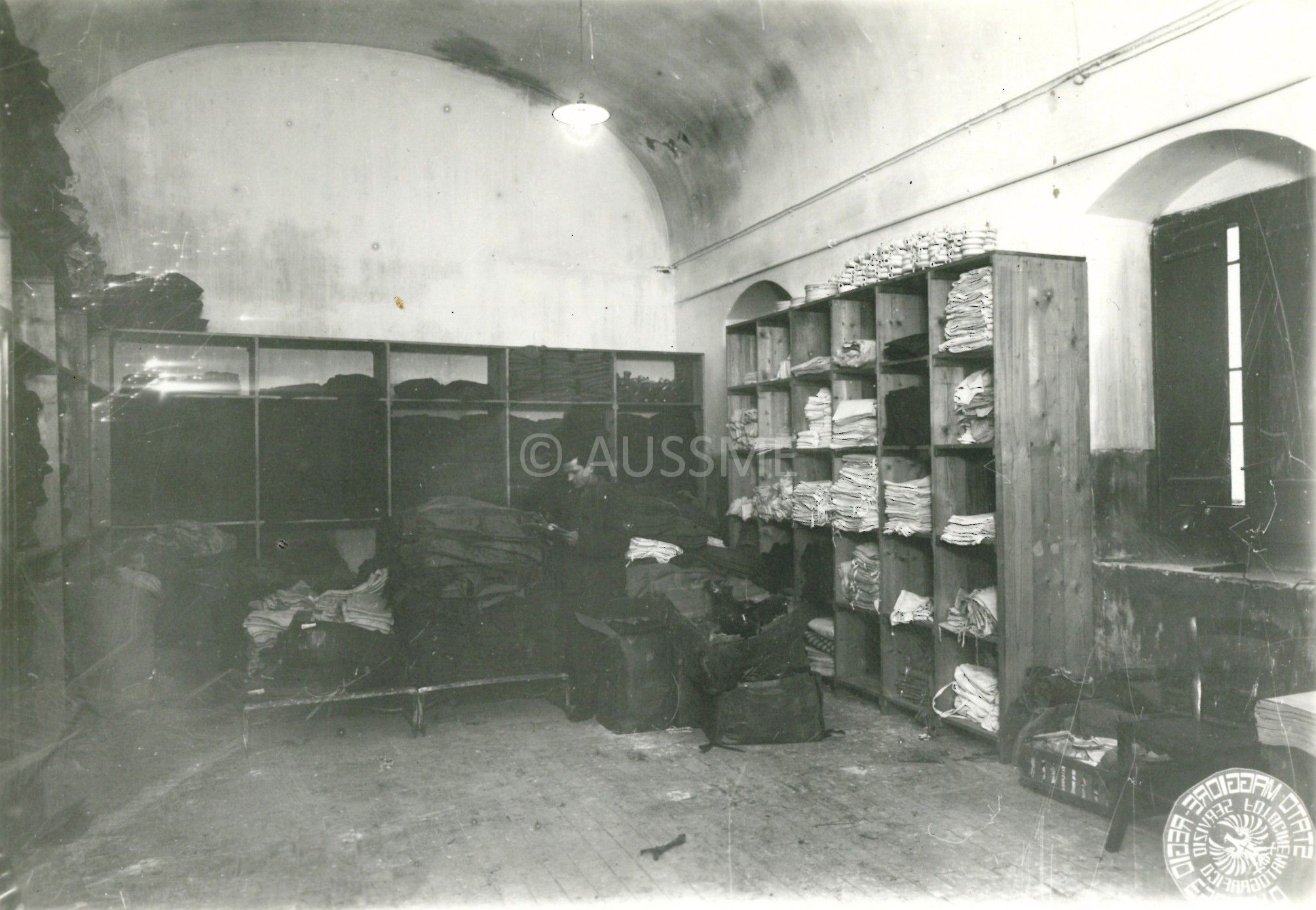Autore/i della scheda: Isabella Insolvibile

Magazzino del campo ospedale n. 204 di Altamura (BA) - Archivio AUSSME, Fototeca 2 Guerra Mondiale Italia 507/639
Dati sul campo
Comune: Altamura
Provincia: Bari
Regione: Puglia
Ubicazione: Scuola IV Novembre (viale Martiri del 1799), Istituto Regina Margherita (Corso Federico II di Svevia) - Altamura
Tipologia campo: ospedale militare
Numero convenzionale: 204
Numero di posta militare: 3450
Campo per: ufficiali - sottufficiali – truppa
Giuristizione territoriale: IX Corpo d’Armata
Scalo ferroviario: Altamura
Sistemazione: accantonamento
Capacità: 480
In funzione: da 12/1942 al 07/1943
Comando/gestione del campo: magg. Florindo Scardapane (dicembre 1942-aprile 1943); magg. Raffaele Episcopo (maggio-giugno 1943)
Cronologia:
Dicembre 1942: i prigionieri alleati vengono ricoverati presso le due strutture che compongono l’ospedale di Altamura.
Estate 1943: l’ospedale viene sgomberato e i degenti inviati altrove.
Presenza dei prigionieri alleati nel campo di Altamura
| Data | Generali | Ufficiali | Sottufficiali | Truppa | TOT |
| 31.12.1942 | 11 | 12 | 108 | 131[1] | |
| 31.1.1943 | 8 | 13 | 131 | 152 | |
| 28.2.1943 | 6 | 21 | 148 | 175[2] | |
| 31.3.1943 | 21 | 30 | 180 | 231[3] | |
| 30.4.1943 | 25 | 33 | 219 | 277[4] | |
| 31.5.1943 | 22 | 30 | 203 | 255[5] | |
| 30.6.1943 | 18 | 22 | 210 | 250[6] |
Storia del campo
L’ospedale di Altamura, in attività dal dicembre del 1942, occupa due diverse strutture: l’istituto scolastico IV Novembre, un po' decentrato, più moderno ma pur sempre una scuola, certamente non concepito come un nosocomio (edificio n. 1 nei rapporti della potenza protettrice); l’asilo Regina Margherita, in centro città, un edificio alquanto datato e utilizzato come ospedale militare per le truppe nazionali fino al 1941, e quindi, forse per questo – ma se ne dirà – lievemente più adatto a ospitare degenti prigionieri (edificio n. 2).
In entrambe le strutture le criticità sono numerose. Ancora in allestimento nel marzo 1943, l’ospedale 204 è tanto carente in personale, alloggi, attrezzature e strumentazione da non soddisfare del tutto neanche i solitamente poco esigenti ispettori della potenza protettrice, uno dei quali riferisce che
Il delegato commenta – dandoci un assaggio della diversa guerra che, inevitabilmente, italiani e alleati combattono – la sorpresa dell’autorità preposta dinanzi alle sue obiezioni: «The hospital Commander was rather surprised that so many things were not considered by us as being satisfactory as this building had been for the last two years in use as a military hospital for Italian troops who, as he told us, were quite satisfied». In generale [TNA, WO 361/1922]. La conclusione, che verrà confermata dall’ispezione del maggio successivo dell’ICRC, è impietosa:
Nelle due strutture ospedaliere, peraltro, manca l’acqua in quantità sufficiente, le installazioni sanitarie sono rudimentali, e inadatte a prigionieri che, nella gran parte dei casi, risultano feriti o menomati agli arti. Difettano medicinali, anestetici, disinfettanti, oltre a spazzolini da denti e carta igienica. Dopo la guerra, l’ufficiale medico britannico parlerà di mancanza di acqua, dieta insufficiente e inadeguata, assenza di ricambi di biancheria – con ricoverati con piaghe purulente costretti a giacere nelle stesse lenzuola per giorni e giorni – infestazione di parassiti. Il dottor. Redgate terrà a dimostrare, con due esempi, «the almost unbelievable ignorance and neglect of the average Italian medical or otherwise»:
Nell’aprile 1943 affluiscono ad Altamura i prigionieri malati già ricoverati a Bari e a Brindisi, i cui ospedali avrebbero accolto, da quel momento, solo prigionieri “non trasportabili” appena giunti dal Nordafrica.
Nel dopoguerra, le autorità alleate aprono un’indagine sul trattamento subito dai degenti di Altamura, ma questa viene, presumibilmente, archiviata poco tempo dopo.
Oggi, l’edificio n. 1 ospita un complesso didattico, mentre è il numero 2 versa in stato di abbandono.
Fonti archivistiche
- Archivio Centrale dello Stato, Ministero dell’Aeronautica, Gabinetto, b. 70, Verbali e Notiziari della Commissione Interministeriale per i Prigionieri di Guerra
- Archivio Centrale dello Stato, Ministero dell’Interno, Direzione Generale Pubblica Sicurezza, A5G, II GM, bb. 116, 117, 118 e 140, Verbali e Notiziari della Commissione Interministeriale per i Prigionieri di Guerra
- Archivio Ufficio Storico Stato Maggiore dell’Esercito, H8, b. 79
- Archivio Ufficio Storico Stato Maggiore dell’Esercito, L10, b. 32
- The National Archives, TS 26/784
- The National Archives, WO 224/118, 151
- The National Archives, WO 361/1922
Bibliografia
- Associazione Campo 65 (a cura di), Campo 65. La memoria che resta, 2020
- Insolvibile I., I prigionieri alleati in Italia 1940-1943, tesi di dottorato, Dottorato in "Innovazione e Gestione delle Risorse Pubbliche", curriculum “Scienze Umane, Storiche e della Formazione”, Storia Contemporanea, Università degli Studi del Molise, anno accademico 2019-2020,
